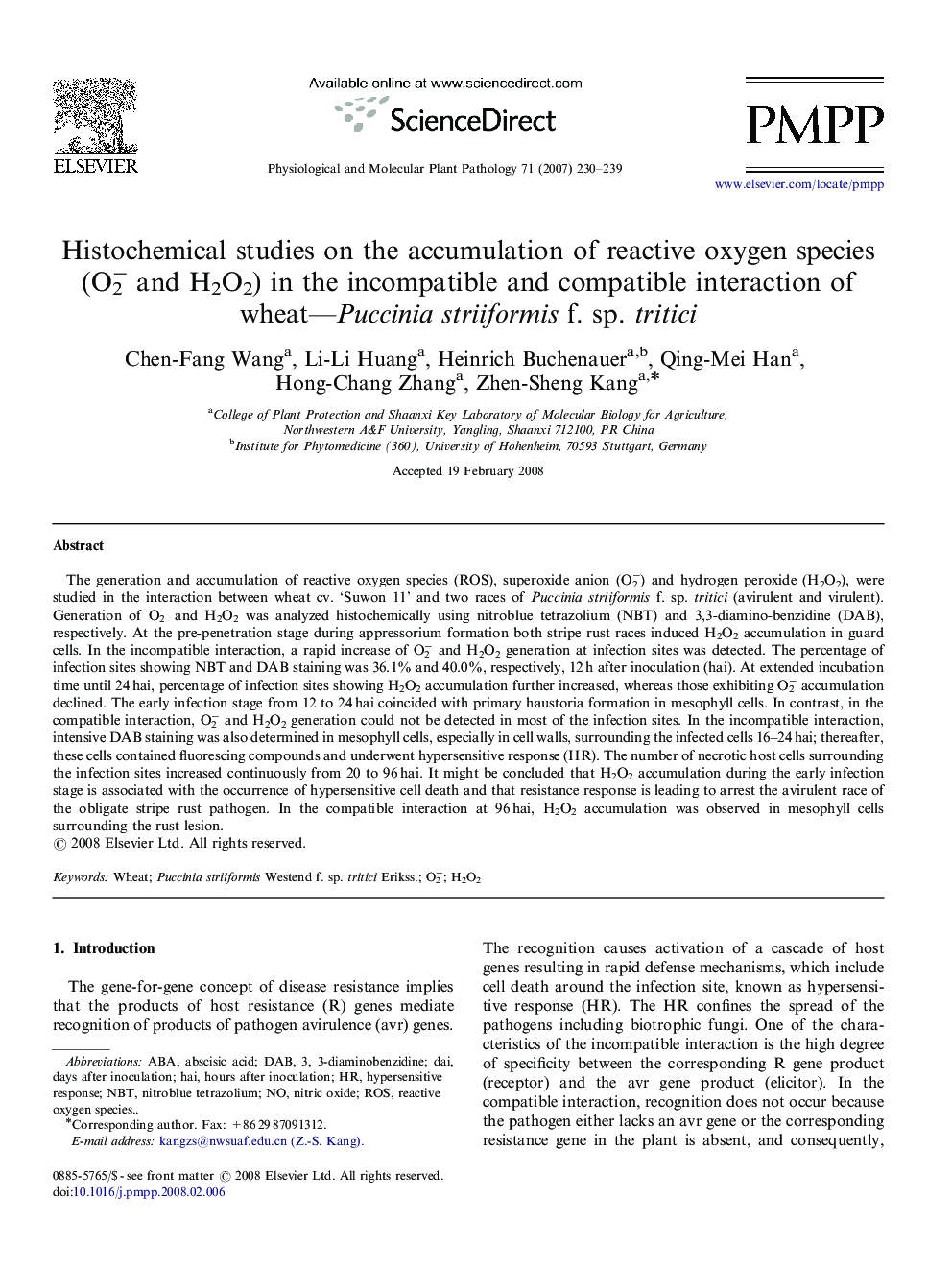| کد مقاله | کد نشریه | سال انتشار | مقاله انگلیسی | نسخه تمام متن |
|---|---|---|---|---|
| 2836667 | 1570870 | 2007 | 10 صفحه PDF | دانلود رایگان |

The generation and accumulation of reactive oxygen species (ROS), superoxide anion (O2−) and hydrogen peroxide (H2O2), were studied in the interaction between wheat cv. ‘Suwon 11’ and two races of Puccinia striiformis f. sp. tritici (avirulent and virulent). Generation of O2− and H2O2 was analyzed histochemically using nitroblue tetrazolium (NBT) and 3,3-diamino-benzidine (DAB), respectively. At the pre-penetration stage during appressorium formation both stripe rust races induced H2O2 accumulation in guard cells. In the incompatible interaction, a rapid increase of O2− and H2O2 generation at infection sites was detected. The percentage of infection sites showing NBT and DAB staining was 36.1% and 40.0%, respectively, 12 h after inoculation (hai). At extended incubation time until 24 hai, percentage of infection sites showing H2O2 accumulation further increased, whereas those exhibiting O2− accumulation declined. The early infection stage from 12 to 24 hai coincided with primary haustoria formation in mesophyll cells. In contrast, in the compatible interaction, O2− and H2O2 generation could not be detected in most of the infection sites. In the incompatible interaction, intensive DAB staining was also determined in mesophyll cells, especially in cell walls, surrounding the infected cells 16–24 hai; thereafter, these cells contained fluorescing compounds and underwent hypersensitive response (HR). The number of necrotic host cells surrounding the infection sites increased continuously from 20 to 96 hai. It might be concluded that H2O2 accumulation during the early infection stage is associated with the occurrence of hypersensitive cell death and that resistance response is leading to arrest the avirulent race of the obligate stripe rust pathogen. In the compatible interaction at 96 hai, H2O2 accumulation was observed in mesophyll cells surrounding the rust lesion.
Journal: Physiological and Molecular Plant Pathology - Volume 71, Issues 4–6, October–December 2007, Pages 230–239